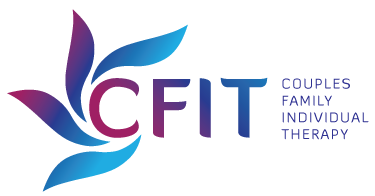There was something different about the decorations in my fourth-grade classroom. I was accustomed to seeing cursive writing posters, displays of student artwork, and bulletin boards with numbers to help us students learn the basics of mathematics associated with early grammar school learning.
However, this classroom had colorful posters, and one stood out. It was an abstract of a guy playing a saxophone, but the message resonated with 9-year-old me: “When life gives you lemons, make lemonade!” I had some insight about what “when life gives you lemons” meant, because two of my friends had parents going through difficult divorces.
But Mrs. Atkinson told us fourth-graders during the first week of school that most people face problems in their lives and sometimes those problems can be quite hard (or bitter, she said, “like the taste of a lemon”). She asked the class whether anyone ever bit into a lemon, and Jenny made a funny face and confirmed that lemons tasted bitter. Then Mrs. Atkinson gave us all a small paper cup of lemonade, and she was right again. It tasted great
***
Coping with and adapting to those obstacles we all encounter in life often results in happy outcomes (the sweet taste of a well-made lemonade), Mrs. Atkinson assured us kids. She was the first teacher who gave us a significant amount of homework, since “you are fourth graders now.’
“You may not like all the assignments,” she said, “but I want all of you to be as smart and happy as you can be by the end of the school year.”
You see, Mrs. Atkinson had high expectations of her students. For those who struggled with verbal comprehension, she expected them to find books to read with a parent or older sibling to increase their vocabulary. For those who hated math, she assigned additional worksheets to reinforce the concepts she was trying to teach. For those who spoke out of turn, the student would get a time out to watch in silence, and then have an opportunity to share an “observation,” as she called it, with the rest of the class.
***
Frequent offenders to this last point were sent to the principal’s office, and none of us wanted to be Tommy, the student most often sent packing. When Mrs. Atkinson got upset with a student, her face turned real red. Even then, however, she was direct, patient, and never shouted.
One day, I finished a test early, and while sitting quietly bored at my desk I tied my jacket sleeves into a knot and found myself tied in place to it when the fire alarm rang. As the other students quickly exited their seats and left the classroom, I was struggling to undo the knots and could not successfully leave the classroom on time. I saw Mrs. Atkinson’s red cheeks waiting at the classroom door for me to untangle, but she didn’t intervene. Once I had escaped from the knots and after she had counted her students outside on the playground, she made it clear to me that I would stay after school for a “little discussion.”
As a child, I was not typically the troublemaker, so this teacher-student meeting would be a new and scary phenomenon for me. Mrs. Atkinson asked me to explain to her what had happened. She quickly realized that I was embarrassed about tying myself into the seat and recognized that I had been bored; so she offered me a deal: I could keep a book inside my desk drawer compartment so that I could read quietly whenever finishing an assignment or test early. If I complied for the rest of the school year, no other discipline for literally tying myself in knots would be necessary.
I avoided being the source of Mrs. Atkinson’s red face for the rest of the school year; Tommy remained the most frequent subject of her red-cheek attention. By the end of the year, the teacher recommended to my parents that I serve on the safety patrol during fifth grade. That was the lemonade: getting recognized as being trustworthy and having learned a valuable lesson.
***
In retrospect, Mrs. Atkinson likely embraced Piaget’s four stages of cognitive development. Between the ages of seven and eleven, children are involved in the Concrete Operational stage, at which time they begin to think logically about concrete events, become more organized, and begin to use logic to apply to specific situations.
Mrs. Atkinson helped me recognize the potential danger of the situation if the fire alarm been associated with a real threat. But she also taught me that it was my responsibility to read books and stay out of trouble when finishing an assignment early.
What I hope to accomplish with Diminishing (Your) Worry and Stress is to share some real-life stories—mine and those of others I know—to figure out how to make the lemonade. I want to utilize my own training, education, and life experiences to offer a few life lessons to anyone who wants to recognize and cope with worry and stress in their lives. These are lessons that I have learned, and that my clients have learned, sometimes the hard way, and that we all can continue to explore together.
So, this is just a collection of stories, with names changed unless specifically approved; yet the stories are authentic, I promise you. And I hope it will be more of a dialogue with you than a dissertation from me. May you learn as much from reading the book, as I have learned from writing it.


